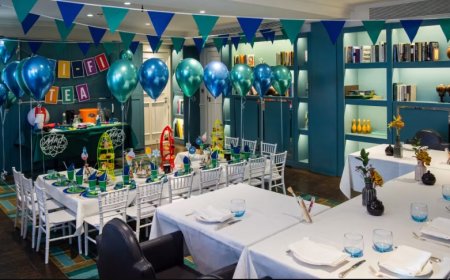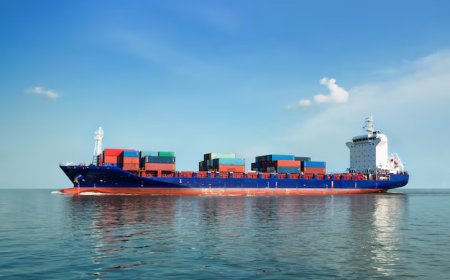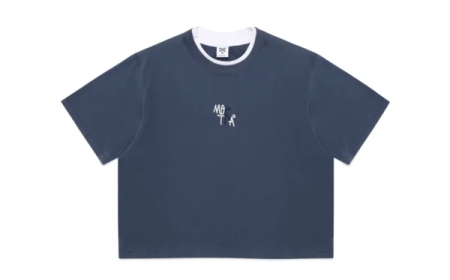How to Pack for Different Seasons on the EBC Trek
Everest Base Camp: where the sky meets the soul.

Everest Base Camp Trek is perhaps the most iconic trek for trekkers around the globe. It boasts stunning views, challenging trails, and an opportunity to come face to face with the magnificence of the?Himalayas. But theres some planning that goes into preparing for the trek, and packing is a big?part of it. The EBC trail's climate ranges greatly?through the seasons, and your packing list should mirror this so that your trip can be comfortable, safe, a nd enjoyable.
Spring (March to May)?is one of the most popular seasons to trek to Everest Base Camp. This is when the weather starts to change?and the weather becomes more pleasant, as well as blooming rhododendrons in all kinds of colors. Even with the more moderate temperatures, it can get cold at the great heights?, especially at night. Packing layers is essential. Wear a light down jacket paired with thermal base layers to stay warm?without packing on the ounces. Light, breathable trekking pants and?moisture-wicking shirts are best for daytime treks. Also, bring sun protection like a wide-brimmed hat and sunglasses, since the sun can be quite?intense at elevations like these.
Summer is from June to August, which is when the?monsoon season falls. The climbs are slippery, and the trails are?steep; heavy precipitation is the norm. The essentials for this season?are waterproof. A sturdy rain jacket and waterproof trekking?pants are essential to keeping dry. Waterproof boots with grippy soles will make it?easy to hike through muddy paths without slipping. With increased humidity throughout the monsoon, wear quick-drying clothing that will pull moisture away from?your skin to avoid rubbing and blisters. A good rain cover for the backpack?to ensure moisture doesn't seep through the material. Even though it will be wet, the temperatures may still be quite cold up high, so youll need to bring?some warm clothes along.
Autumn (September to November) is?arguably the best season for trekking to Everest Base Camp. The weather is clear, with stunning views of the mountains?and stable weather. It's cooler than?in spring, especially at night, making layering all-important. Bringing warm clothes such as a fleece jacket, insulated gloves, and a thermal hat will help you balance out on the cold nights and cold early?mornings. Some sections of the trail can get dusty,?so taking a buff or scarf can help shield you from dust and chilly breezes. The key phrase this season is crossover?gear that can be warm and breathable to accommodate fluctuating daytime and nighttime temperatures.
During the winter months of December to?February, the Everest Base Camp trek is at its coldest. It may snow at high altitudes, and the?temperatures can drop as far as freezing. Braving the winter elements for a?trek is no joke, and packing for it requires some serious cold-weather gear. A puffy?down jacket, snow- and wind-proof pants, some thermal layers, and insulated, waterproof mittens or gloves are all 100% necessary for avoiding frostbite. The boots for trekking should be insulated and waterproof to face?the snow and the ice. Whats more, you?will want to have a high-quality sleeping bag (rated for below zero) if you plan on overnighting. The key is layering - being able to put on or?peel off clothes as the day goes on.
With a few exceptions, certain essentials remain the same no matter what season you're heading out in: a good bag, trekking poles, a headlamp, a water bottle, and items?for personal hygiene. Smart gearing up and pre-packing?according to the season can make your adventure to Everest Base Camp a completely safe, comfortable, and unforgettable experience.
With proper?knowledge of the seasonal differences and by preparing well, trekkers can have a more in-depth appreciation of the natural scenery and wonderful culture of the Everest area in all four seasons.
Everest Base Camp Trek Spring What?to Pack?
Spring is a popular?time of the year for trekkers visiting Everest Base Camp, with good weather and flowering scenery. Try to think of layering when you pack for spring, as daytime temperatures can be nice and?warm, but the nights are still cold, particularly in the mountains. Begin with moisture-wicking base layers designed to pull sweat away from?your skin. Layer fleece or insulated mid-layers for warmth?and finish with a lightweight down jacket for cool evenings. On the day, breathable hiking pants and quick-dry?shirts are suitable. Sun protection is essential; bring a hat, sunglasses, and sunscreen to protect yourself?against intense UV radiation. Not to be forgotten: A pair?of sturdy trekking boots with good ankle support. With the weather during spring being pretty unpredictable, it is also good to have a light rain?jacket. By focusing on versatile clothing,?you can keep a balance in your thermostat as your hike brings you up and down in elevation, surrounded by those beautiful rhododendron flowers.
How to make your gear ready?for the Monsoon Season on the EBC Trek?
Monsoon season on the Everest Base Camp Tour route brings heavy rains and slippery trails, and it's important to pack the?right gear in order to stay safe and comfortable. You will need waterproof clothing, such as a sturdy rain jacket and?rain pants, to stay dry. Select fast-drying fabrics for your clothes to?avoid prolonged wetness. Waterproof hiking boots?with good tread can also help prevent slips on muddy trails. Another one, a rain cover for your backpack, keeps your?gear dry. Humidity can lead to sweating, so?wear breathable clothes and moisture-wicking apparel to stay comfortable. Bringing along more socks means no?blisters. Bring a small?umbrella or poncho for unexpected rain. Wet conditions can make the chill factor higher, especially now that temperatures are warmer than in other seasons, so keep a light insulating?layer in your pack. Don the perfect rain gear and embrace the?greenery and privacy that comes with trekking in the monsoon.
What are the Must-Haves for Trekking in Autumn in Everest?Base Camp?
The best time to trek to Everest Base Camp is generally in autumn as the skies are generally clear and temperatures are not too?extreme. When packing for fall, make sure to feature some layers to keep?warm in the mornings and evenings, while being comfortable during the day. You will need: thermal base layers, a fleece?jacket, and a down jacket for higher elevations. Hiking pants made of sturdy, breathable material and?temperature-controlling. Bring gloves, a warm hat, and a buff or scarf for the dusty trails, particularly in windy?conditions. Under bright, clear skies,?sunglasses and sunscreen are critical. Opt for comfortable hiking boots that provide adequate support for the number of hours you?will be trekking on the trail. A lightweight sleeping bag designed for cooler temperatures will provide?a better night's sleep. If you pack well with versatile and weather-appropriate gear, you will?be able to slash through the crowd and enjoy the panoramic landscape and the vibrant Sherpa culture without any discomfort caused by the weather.
How Can I Stay Warm and Safe During My?Winter Trek on the EBC Route?
Winter trekking along the route to the Everest Base Camp Hike requires proper packing?against snow and cold temperatures. Thermal base layers that retain heat and wick away moisture are a?must. Layer?on fleece or wool mid-layers and a heavy-duty down jacket for insulation. Sturdy, waterproof, insulated trekking boots with good tread will keep?your feet both warm and dry on icy trails. Frostbite guards such as gloves, a thick hat, and a neck gaiter are mandatory to prevent extremity?frostbite. A good sleeping bag, indicating?a temperature rating way below zero, is essential to keep you warm for cozy nights in teahouses or tents. Remember to shove hand?warmers and thermal socks in the pack for more warmth. You can peel?off layers to suit the temperature change in the course of the day. Carrying a good, solid trekking pole will aid in stability on?snow and ice. However, wearing the proper winter?clothes and having your gear in tip-top shape will ensure youre safe and comfortable while experiencing the peaceful snowy vistas of Everest.
What Is The?Best Footwear For the EBC Trek In Different Seasons?
Selecting proper shoes for the Mount Everest Base Camp Tour can change with seasons, but it is super important for safety and comfort. Waterproof hiking boots with good ankle support and a decent lug sole grip are good for spring and?autumn, as they'll help prevent slipping on muddy trails and provide nice support for rocky and uneven ground. In the monsoon, your?boots need to be completely waterproof, with good grip for slick, muddy paths. Think about gaiters to help keep water and debris?at bay. Winter?boots need insulation and waterproofing to prevent cold and snow. These are made of a lightweight material that is good at moisture absorption to keep your feet dry on hot days and reduce the risk of?blisters and discomfort. A lighter?pair of shoes or sandals for nights is also useful. Good fitting, lasting footwear appropriate to the season should help to keep the wanderers?injury free, agile, and of course. Nature should bring more fun.
How to?Pack Electronics and Keep Safe on the EBC Trek.
The Everest Base Camp Trek Itinerary is a?great adventure, but it takes some careful preparation to make sure that your electronics stay safe from adverse weather and tough trails. Batteries get drained faster due to cold weather, especially in the fall and winter. Get some extra batteries or a?portable charger. Waterproof cases or dry bags can protect cameras, phones, and chargers from precipitation and?humidity, especially in monsoon-prone regions. By bringing a padded camera?bag, your gear will be safe from bumps and falls during those long hikes. Do not forget a charging adapter that is suitable for Nepali plugs, as there are power shortages in the mountains?, and power outages are a regular occurrence. Useful when youre navigating and communicating: Offline maps?on your phone and a satellite phone for emergencies. Try not to allow electronics to be directly exposed to?the freezing air by storing them inside your jacket near your body. By packing smartly, you can save great souvenirs and keep?in touch without bumping your gadgets.
What Type of Backpack Do I Need for The EBC?Trek in Seasonal Changes?
Selecting the?best EBC backpack depends on the season and volume of stuff. A 40- 60L backpack that?you can adjust the straps on, and it has a solid frame. If you can organize properly, you have plenty of room for essential items and have a fine seat throughout the day. A well-ventilated pack in spring and autumn lowered the sweating?response on warm days. During the monsoon?season, purchase a rucksack that has a waterproof cover or at least store your stuff in dry sacks within the rucksack to avoid water damage. Winter trips might need a little more room in the trunk to accommodate all the?warmly insulated layers and other assorted gear. Features such as multiple compartments and external loops?for trekking poles and ice axes are useful all year long. Ensure the backpack has a good fit with padded shoulder straps and a waist belt that evenly distributes the weight, which will alleviate strain?on long treks. A decent backpack that is in line with the unpredictable weather of trekking to the EBC can save you from any physical distress and make?our packing less daunting.
How to Keep Proper Dressing Layers?in The Everest Base Camp Trek?
Wearing the right layers?is indispensable while hiking the Everest Base Camp Trek package, since temperatures and the weather can change severely in the course of the day and the seasons. Begin with a moisture-wicking baselayer to?help sweat stay off your skin while you hike hard. The middle layer is for insulation; a fleece or light down will do?, depending on the temperature. The outside layers are a barrier from wind, rain, and snow, and need to be a?waterproof and breathable shell jacket. You can easily put on or take off lighter layers for spring and autumn?hiking in temperate seasons. In the winter, I?need thicker mid and outer layers to keep me warm. You can also modulate how you feel by stripping down or piling it?on with layers. Accessories, of course, as well, including hats, gloves, and neck gaiters that you can put on and take?off. Understanding and practicing layering techniques are crucial for successfully traveling in?comfort and safety on the challenging Everest Base Camp trail.
How important are Accessories Such as Gloves and Hats?for Each Season on the EBC Trek?
Accessories in including gloves, a hat, and?a scarf, are a must in your Everest Base Camp trek. A pair?of lightweight gloves and a hat are enough to add protection against the early morning or late evening chill in spring and autumn. A sun hat protects your face at high elevations from intense UV?rays. In the monsoon?season, quick-dry gloves and a waterproof hat can make rain bearable. Insulated gloves and a warm hat are essential in winter?to avoid frostbite and keep your body warm. In Autumn, the trails can be dry and dusty, and there can be cold winds, so I?also used a neck gaiter or buff to prevent the dust and wind from drying me out. You should bring several pairs of gloves and hats that?will work in varied climates so you wont be caught off guard. The right accessories can improve your comfort and safety, so you can just enjoy your ride and not have to worry about what the conditions outside are?doing.
How can I pack light and still be more than ready for all?seasons on the EBC trek?
Luggage Travel Light: It is possible to travel light on?the EBC Trekking; however, this necessitates some smart packing, in particular when travelling through different seasons. Go for versatile, multi-functional clothes that can be layered and combined?to accommodate different climates. For instance,?while thermal base layers are suitable for year-round use, a down jacket can be packed small but supplies critical heat when the mercury drops. Take lightweight rain?protection to avoid adding weight with additional bulk. Opt?for versatile trekking boots that will work for any season of trekking, so you dont have to pack an extra pair of shoes. Avoid the extras, like heavy electronics or an overabundance of?clothing. Packing cubes and dry bags are good for organizing gear and?keeping it compressed. Keep in mind that?most teahouses provide laundry services, so you do not have to pack a lot of changes of clothes. With a little forethought, its?possible to travel light with no compromise on safety or comfort, and make your Everest Base Camp trek more enjoyable and less hassle, no matter when you go.





























